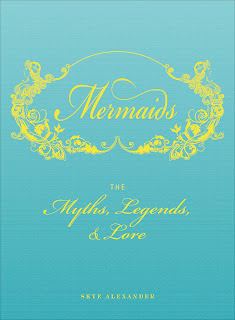I’d like to thank Susan Oleksiw, author of the Mellingham Mystery
series and the Anita Ray series, for inviting me to participate in this
writers’ blog tour: The Next Big Thing. Check out her post for the tour at
susansblogbits.blogspot.com “One Writer’s World.” Susan and I have known each
other for many years, and cofounded the publishing company Level Best Books,
along with Kate Flora. They’re both terrific writers, and Susan is also a
talented photographer.
On this tour, lots of writers share
their experiences and ideas about the writing process, and talk about
either an already published book or a work in progress. It's a great opportunity to get together online with our friends, colleagues, and readers. We all respond to the
same set of questions, but of course our answers are all different. Although
I’ve got two novels ready for a publisher (anybody interested?) and am halfway
through the first draft of another, I decided to blog about my latest published
work, which I hope will become my Next Big Thing sales-wise.
For those of you who don’t know me, I’m the
author of more than thirty fiction and nonfiction books, including Hidden Agenda, which won The Kiss of
Death Award for best novel of romantic suspense. Most of my fiction falls into
the mystery category. Much of my nonfiction work centers on health/healing,
metaphysical subjects, home/interior design, and mystical, magical beings such
as angels and mermaids. My short stories have been published in numerous
anthologies internationally, and my work has been translated into more than a
dozen languages.
Q: What is the title of your book?
My most recently published book, Mermaids: The Myths, Legends, and Lore, came out earlier this year
and includes all sorts of tales, trivia, sightings, and fascinating info about
mermaids throughout history and from around the world.
Q: Where did the idea for the book come from?
My editor, Andrea Hakanson, at Adams Media and my now-agent, Paula
Munier, came up with the idea––thanks again, ladies––and we developed the book
together.
Q: What genre does your book fall under?
Basically, it’s a nonfiction work and classified under the rather
boring “reference” category, but Adams produced it so beautifully (hardcover
with lots of lovely turquoise illustrations throughout) that it really should
be considered a gift book as well. You could also shelve it under mythology
because, as the subtitle says, it traces the myths, legends, and lore about
merfolk back thousands of years to ancient Assyria.
Q: Which actors would you choose to play your characters in a
movie rendition?
Well, lots of movies have already been made about mermaids. Disney
popularized Hans Christian Andersen’s story in the animated movie The Little Mermaid, which has grossed billions of dollars since its
release in 1989. However, the actual tragic tale is a far cry from the fluffy Hollywood
interpretation. And mermaids have appearanced in other movies, including Splash in 1984 starring Daryl Hannah. The Secret of Roan Inish is about Irish
Selkies, a type of merfolk who shapeshift from seals to humans. Many of the individual legends in my book could be
brought to the movie screen––I’d nominate Scarlett Johansson, Amanda Seyfried, Evan
Rachel Wood, and Sierra McCormick for mermaid roles.
Q: What is the one-sentence synopsis of your book?
I’d say: Everything you ever wanted to know about these mysterious
and magical beings, and more. Actually, the back cover copy says: “In this
beautiful collection, you’ll explore the watery origins of these mysterious
nymphs, from the streams and rivers of ancient Babylonia to the shining seas of
the New World and beyond.”
Q: Will your book be self-published or represented by an agency?
Adams Media, in Avon, MA published the book this year; they’ve
also published seven of my other books. Paula Munier––one of my inspirations at
Adams at that time––is now my literary agent and is seeking publishers for two
of my novels.
Q: How long did it take you to write the first draft of your
manuscript?
I spent about three months on the first draft, then another few
weeks making revisions my editor recommended. I can’t remember the exact
timeline, but from conception to birth the project probably took about the same
amount of time as a human baby would, but with a lot less discomfort!
Q: What else about your book might pique the reader's interest?







